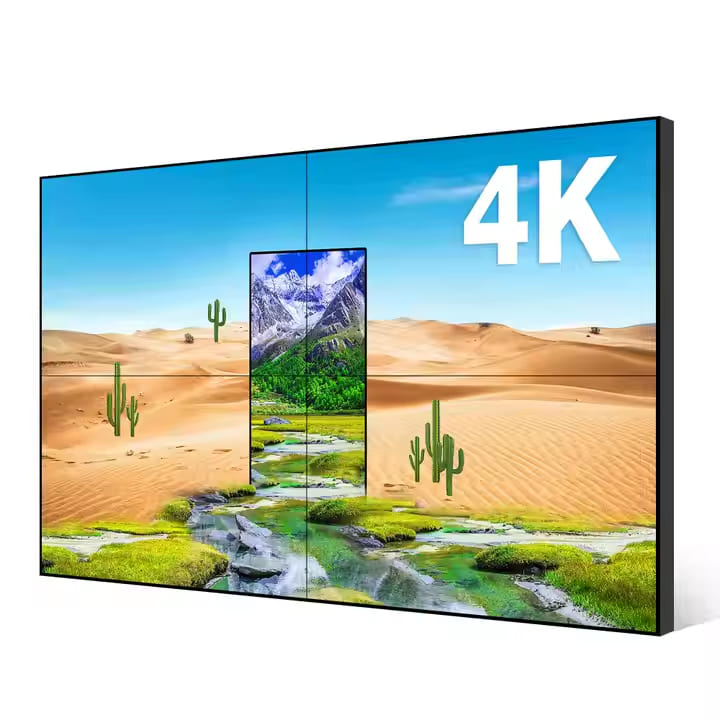In recent years, two major technologies have dominated the large-screen display market: LCD video walls (LCD splicing screens) and LED displays. When selecting a solution for information display, how should one choose between them? To answer this, we must first understand the nature and characteristics of both products and then make a decision based on actual needs.
1. The Nature of LCD Video Walls and LED Displays
LCD Video Wall (LCD Splicing Screen)
- Also known as DID splicing screens, these are composed of multiple display units assembled together.
- They rely on control software to achieve full-screen or split-screen display effects.
- The core component is the LCD panel, with major brands including Samsung and LG.
LED Display
- The main component is the LED chip, with leading brands such as NICHIA, CREE, OSRAM, and Epistar.
2. Characteristics of LCD Video Walls vs. LED Displays
① Features of LCD Video Walls
- Ultra-narrow bezel design (minimal gaps between screens).
- Space-saving and easy installation (options include cabinet, wall-mounted, floor-standing, and embedded setups).
- High brightness (up to 700 cd/m²) and contrast ratio (5000:1).
- Full HD (1080p) display, delivering highly accurate color reproduction and image fidelity.
- Supports multiple signal inputs/outputs, making it ideal for control rooms, conference rooms, and digital signage.
② Features of LED Displays
- Seamless display (no visible gaps, unlike LCD panels).
- Modular design, allowing flexible size adjustments.
- Extremely high brightness, making it suitable for outdoor and high-ambient-light environments.
- Automatic brightness adjustment for optimal visibility under different lighting conditions.
- Strong durability:
- IP65-rated for outdoor use (dustproof, waterproof, anti-corrosion, shockproof, and lightning-resistant).
- Can withstand harsh weather conditions.
Key Differences in Visual Performance
- For close-up viewing (e.g., control rooms, meeting rooms):
- LCD video walls provide sharper images and better color accuracy due to higher pixel density.
- Even a 46-inch LCD panel with a 3.5mm bezel offers better clarity than most small-pitch LED displays.
- For large-scale outdoor advertising or events:
- LED displays are superior due to higher brightness, seamless visuals, and weather resistance.
3. Market Trends: LCD Video Walls Gradually Replacing LED Displays?
With advancements in display technology and increasing demand in security, broadcasting, and corporate environments, users now prioritize:
- Higher resolution (4K/8K).
- Better contrast and color performance.
- Flexible multi-screen control.
While LED displays excel in brightness and outdoor durability, LCD video walls are becoming the preferred choice for indoor applications due to their superior image quality and versatility.
Conclusion: Which One to Choose?
| Scenario | Recommended Display | Reason |
|---|---|---|
| Indoor control rooms, conference rooms, retail displays | LCD Video Wall | Better clarity, color accuracy, and multi-screen management. |
| Outdoor billboards, stadiums, concerts, large events | LED Display | High brightness, seamless display, and weather resistance. |
As technology evolves, LCD video walls are increasingly replacing LED displays in indoor professional settings, while LED remains dominant for large-scale outdoor applications. The best choice depends on viewing distance, environment, and content requirements.

